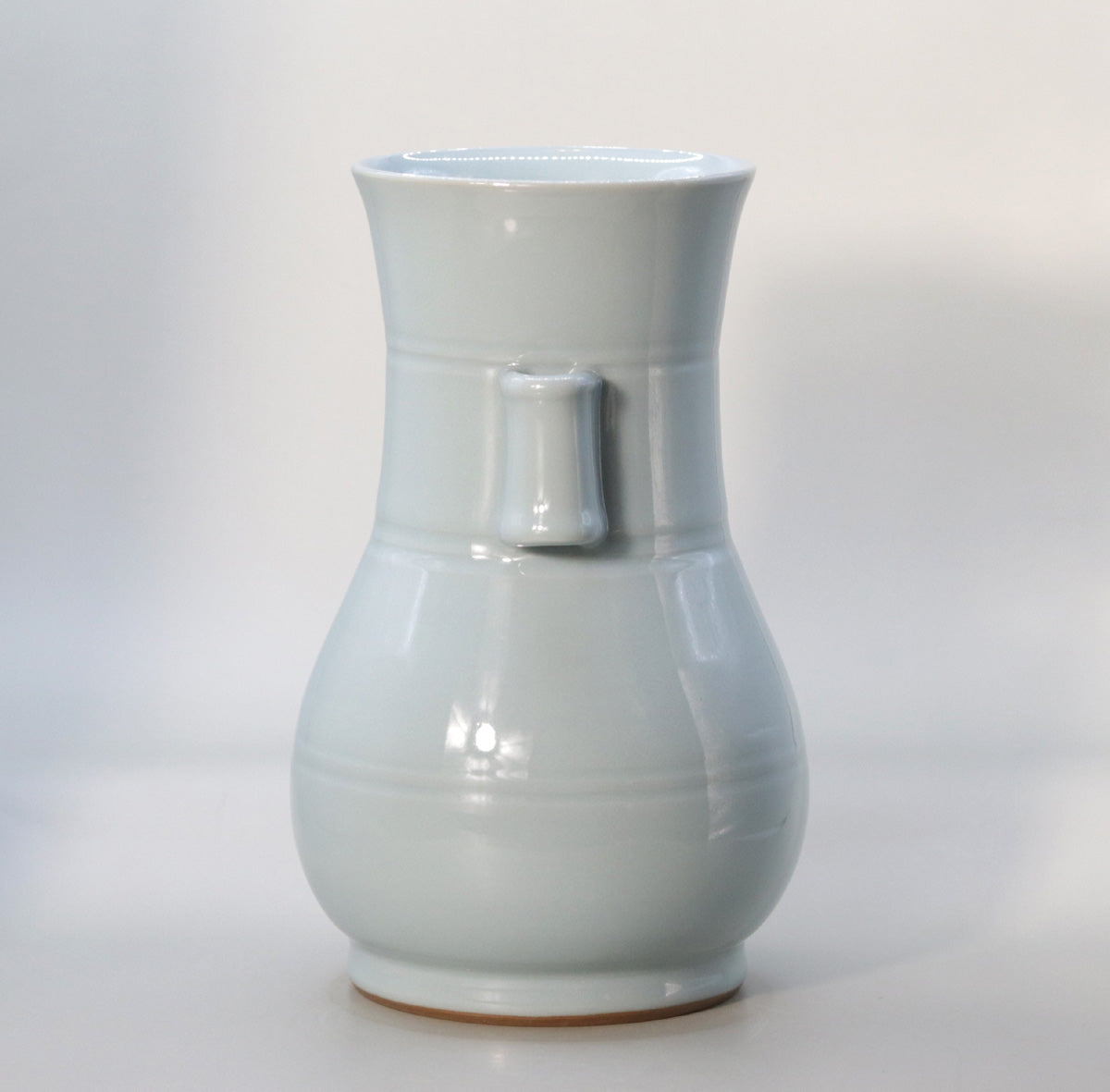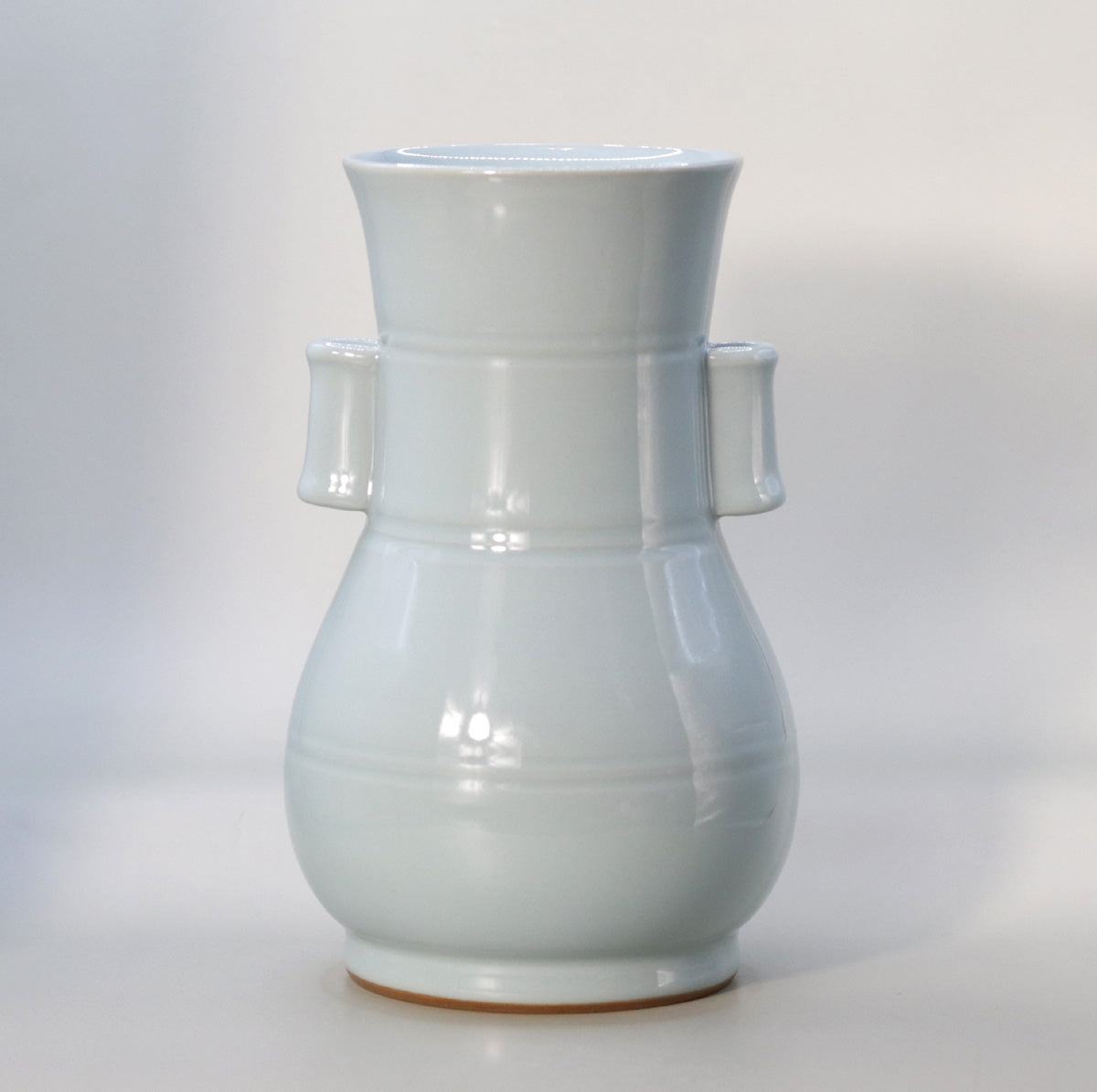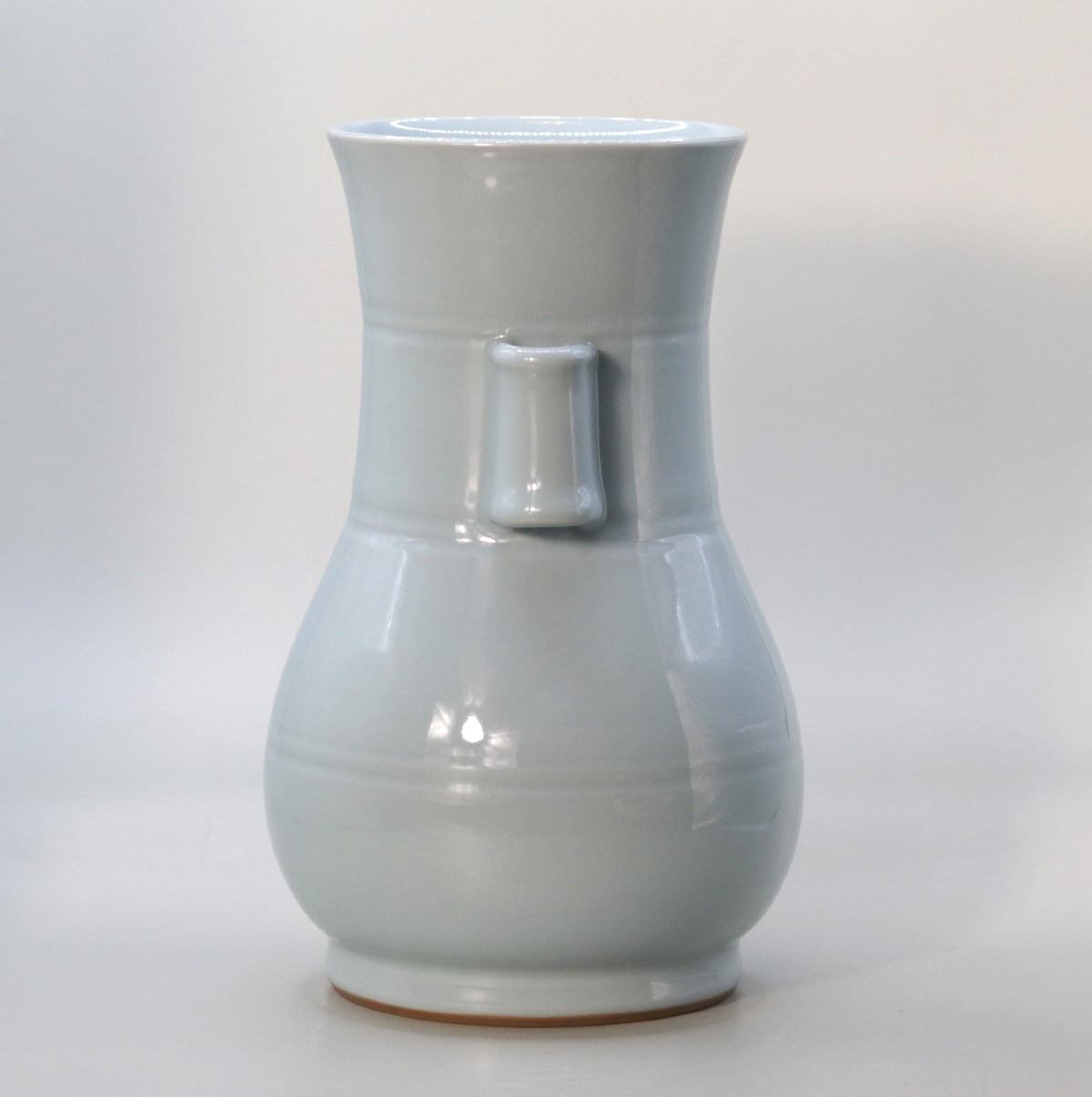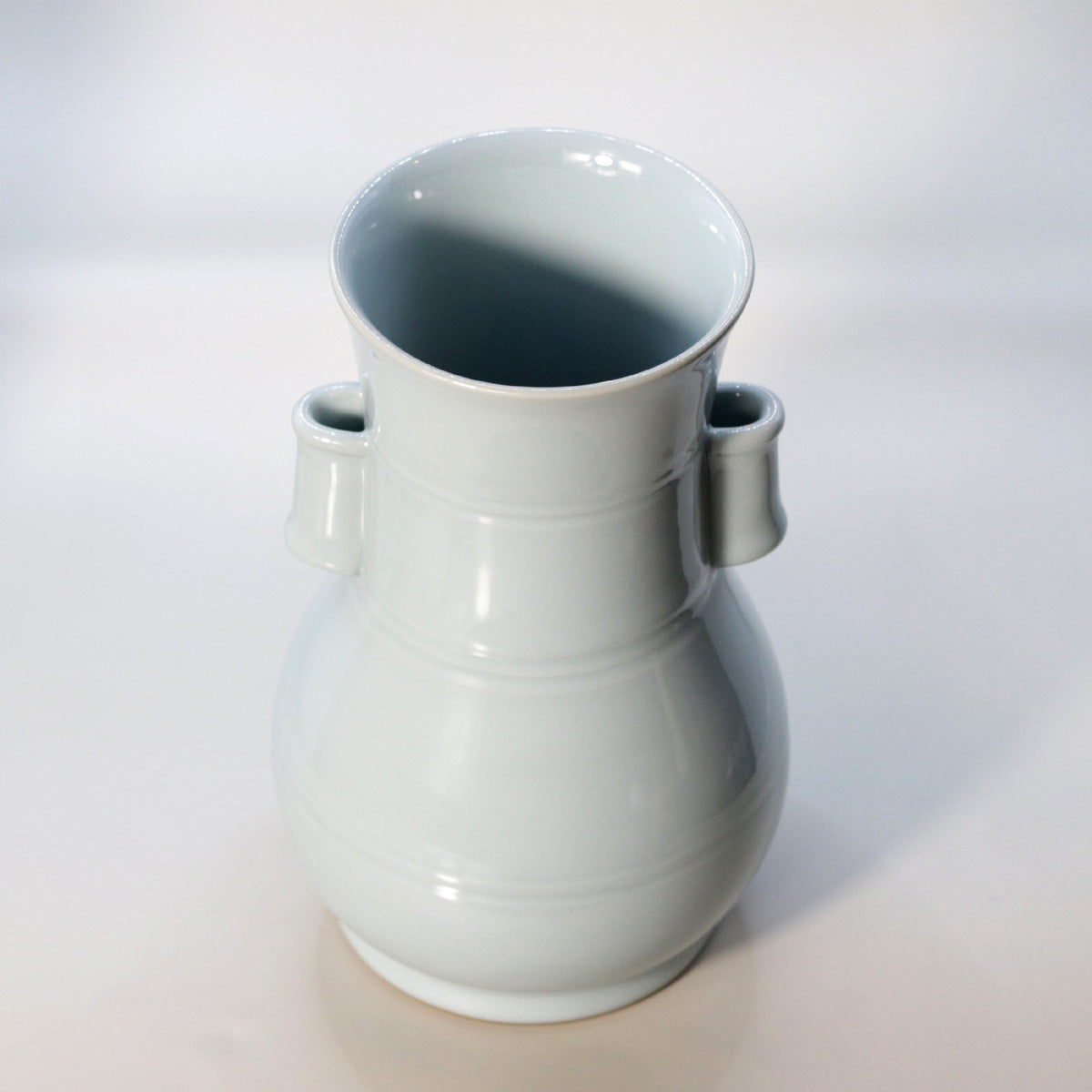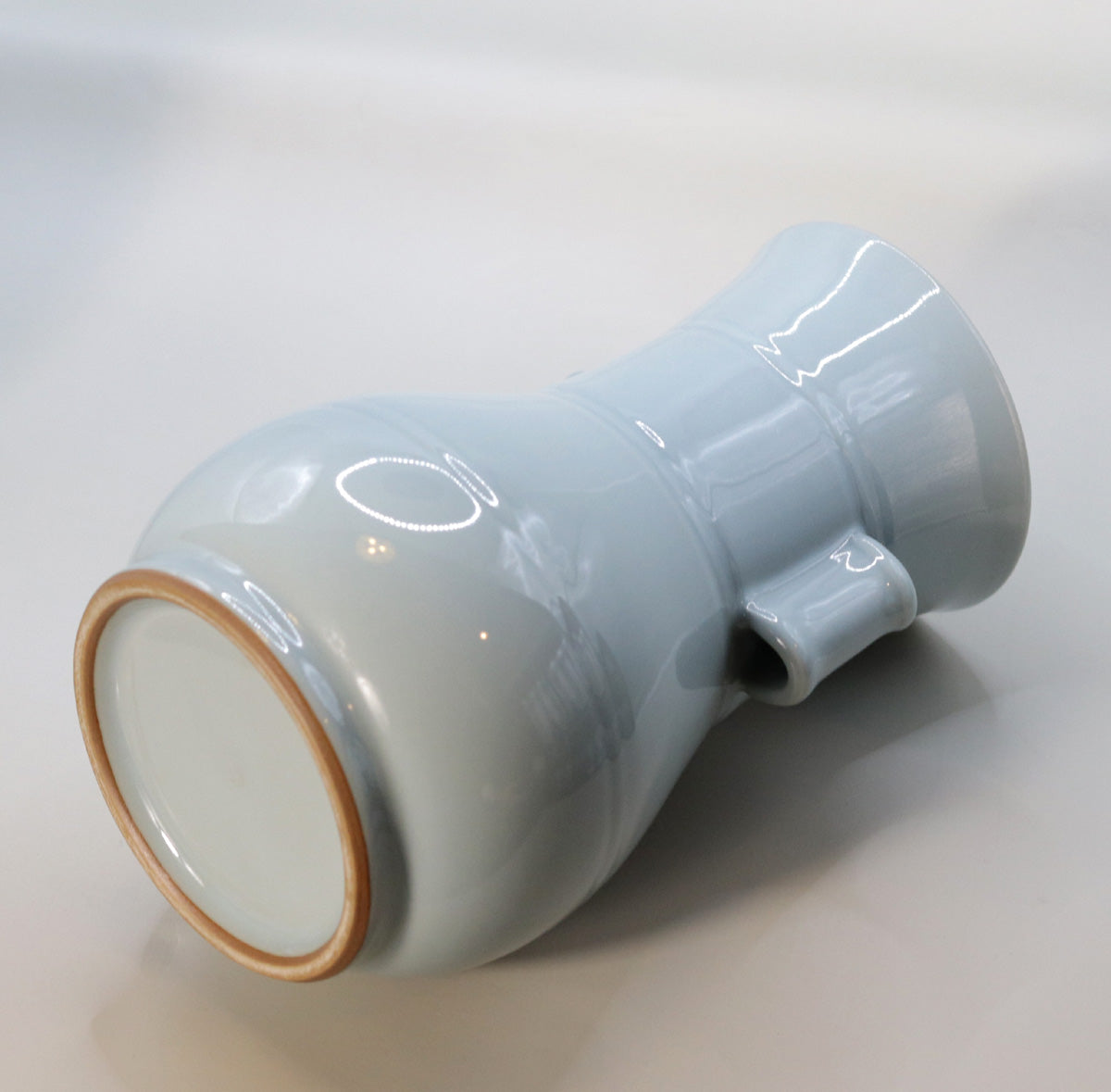Blue gourd ear bottle Suwa Sozan
Blue gourd ear bottle Suwa Sozan
Couldn't load pickup availability
Width: 13.0cm Height: 20.6cm
The "Celadon Kanjihei" is a work created by the fourth generation Suwa Sozan , modeled after a masterpiece of Kinuta Seiji from the Longquan kiln during the Southern Song dynasty. It faithfully inherits the glaze color of "Sozan Celadon" that the first generation Suwa Sozan perfected after 25 years of research, while elevating it to a refined appearance that fits in with modern tea ceremonies and room ceremonies.
Features of the design
Kanji
The pair of ears on the left and right sides of the border between the body and neck were used in ancient times to hang a bottle from a string. Suwa Sozan IV made the inside of the ears very shallowly recessed and the outer edges slightly bulged, achieving both soft shadows and a comfortable grip.
Rhythm from the torso to the neck <br data-start="347" data-end="350">The lower part is plump and rounded, tapering gently at the shoulders before joining the cylindrical neck. A thin strip of carving is carved down the center of the neck and another at the bottom of the torso, providing an accent that tightens the whole piece.
Outward-turned rim <br data-start="453" data-end="456">The rim opens slightly outward, creating a shape that naturally holds the floral motifs. A very thin layer of glaze has accumulated on the inside, making the pale jade color stand out even more deeply.
Glaze Tone - The Breath of Sozan Celadon
The trace amounts of iron contained in the clay melt in the reducing flame, resulting in a highly transparent blue-green color. As you can see in the photo, the glaze accumulates slightly thicker at the base of the nukimimi and in the recesses of the obi-knife, creating a deep shadow gradation. This is proof that the fourth generation has meticulously reproduced the technique established by the first Suwa Sozan , "designing the clay and the iron in the glaze as one."
Historical background and significance of design
The pierced ear vase is a vessel shape highly prized by the Southern Song Dynasty court and literati, and is one of the typical motifs of Longquan celadon. Originally used as a ritual vessel or ceremonial object, it was believed that hanging it up high on a string through the ear would ward off evil spirits. Suwa Sozan IV understood this spirituality while adjusting the dimensions and center of gravity to suit Japanese flower vase culture. By maintaining the golden ratio of the diameter of the mouth, the diameter of the body, and the diameter of the foot, it achieves both a beautiful appearance and a sense of stability when placed on a shelf or tokonoma alcove.
Use in tea ceremonies and formal occasions
Holding the flowers in place <br data-start="965" data-end="968">The fine band around the neck of the vase acts as a holder for the flowers, so they do not wobble even when placed in a single vase.
Reflection of Light <br data-start="1022" data-end="1025">The soft luster created by the thick glaze shimmers like a pale water mirror when illuminated by the light from a candle or lantern.
Combinations of the Four Seasons <br data-start="1087" data-end="1090">Colorful flowers such as Yamabuki and peach blossoms in spring, Hibiscus and iron wire in summer, yellow cosmos in autumn, and nandina in winter combine with the jade-green glaze to bring out the charm of the season.
Artist profile and creative philosophy
Suwa Sozan IV was born in Kyoto in 1970. He was trained by Suwa Sozan III and lacquer artist Nakamura Sotetsu XII, and took on the name of the IV in 2002. While continuing the research into celadon from the first generation, he has also experimented with a variety of expressions such as kneading techniques and plaster molding, and believes in infusing each piece with a story. In this piece, he entrusts the symbolism of the nukimi to tell a story of rebirth and good fortune, in which "ancient ritual vessels are reborn in a modern tea ceremony."
Conclusion
The "Celadon Open-eared Vase" is a masterpiece that fuses the elegance of Southern Song Longquan kiln celadon with the intricate sense of form of Suwa Sozan IV. The protective prayer contained in the open-eared vase, the tranquility of the clear blue, and the capacity to welcome flowers - all of these harmonize to bring a pure atmosphere to the space of a tea ceremony or ceremonial occasion. The brilliance of "Sozan Celadon", inherited from the first generation, lives on in this work and will quietly nourish the hearts of those who see it.
Share
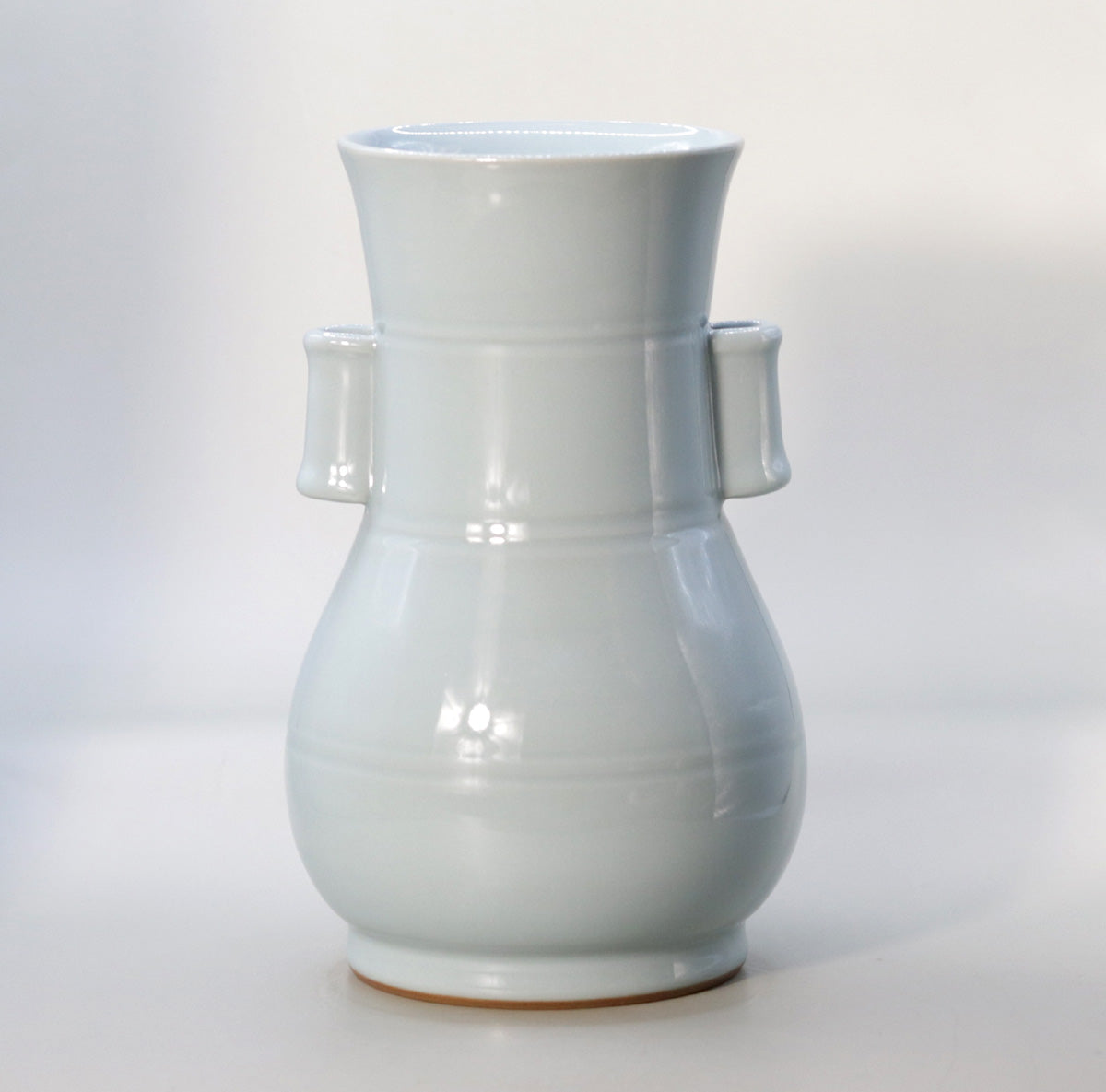
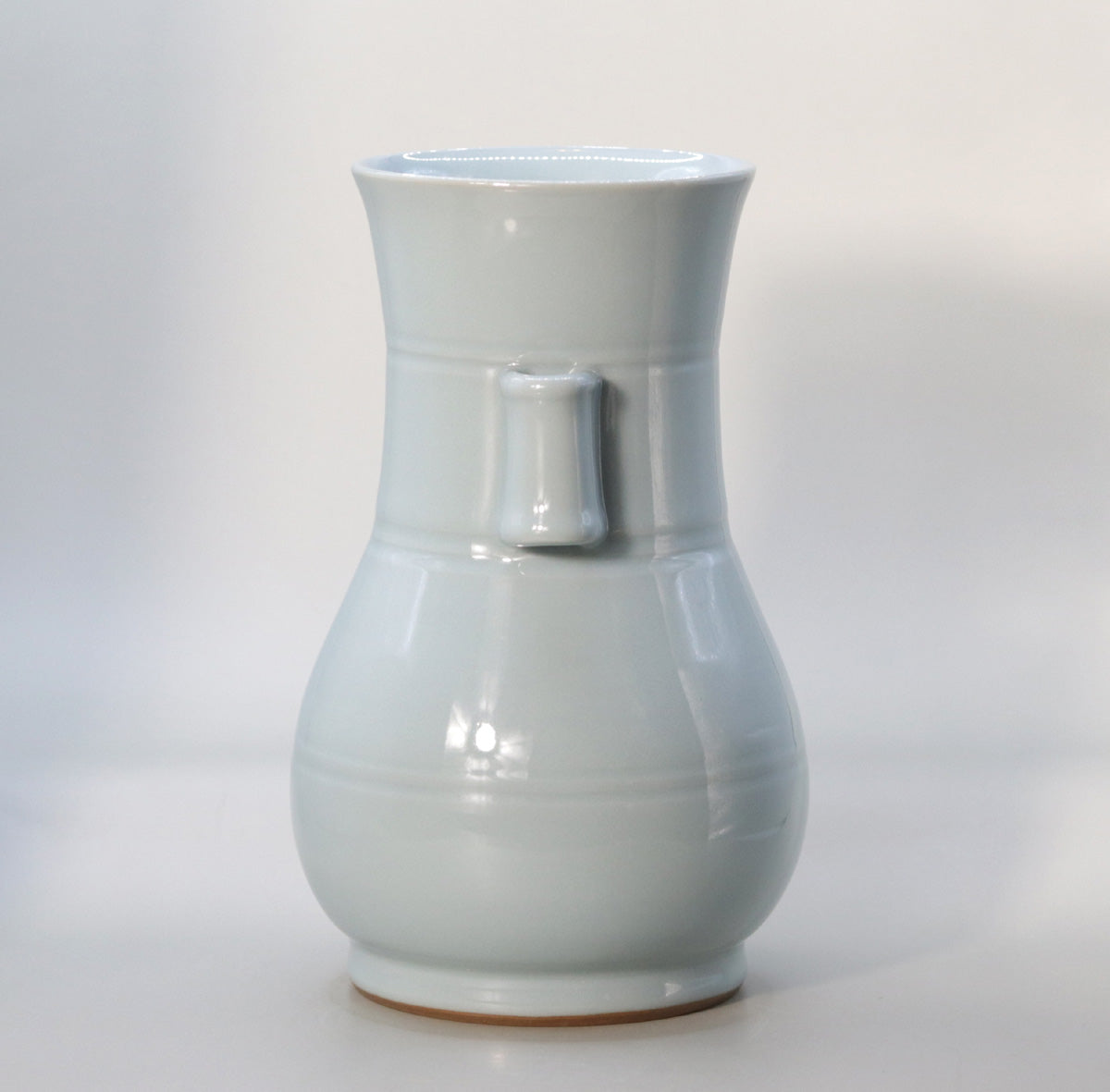
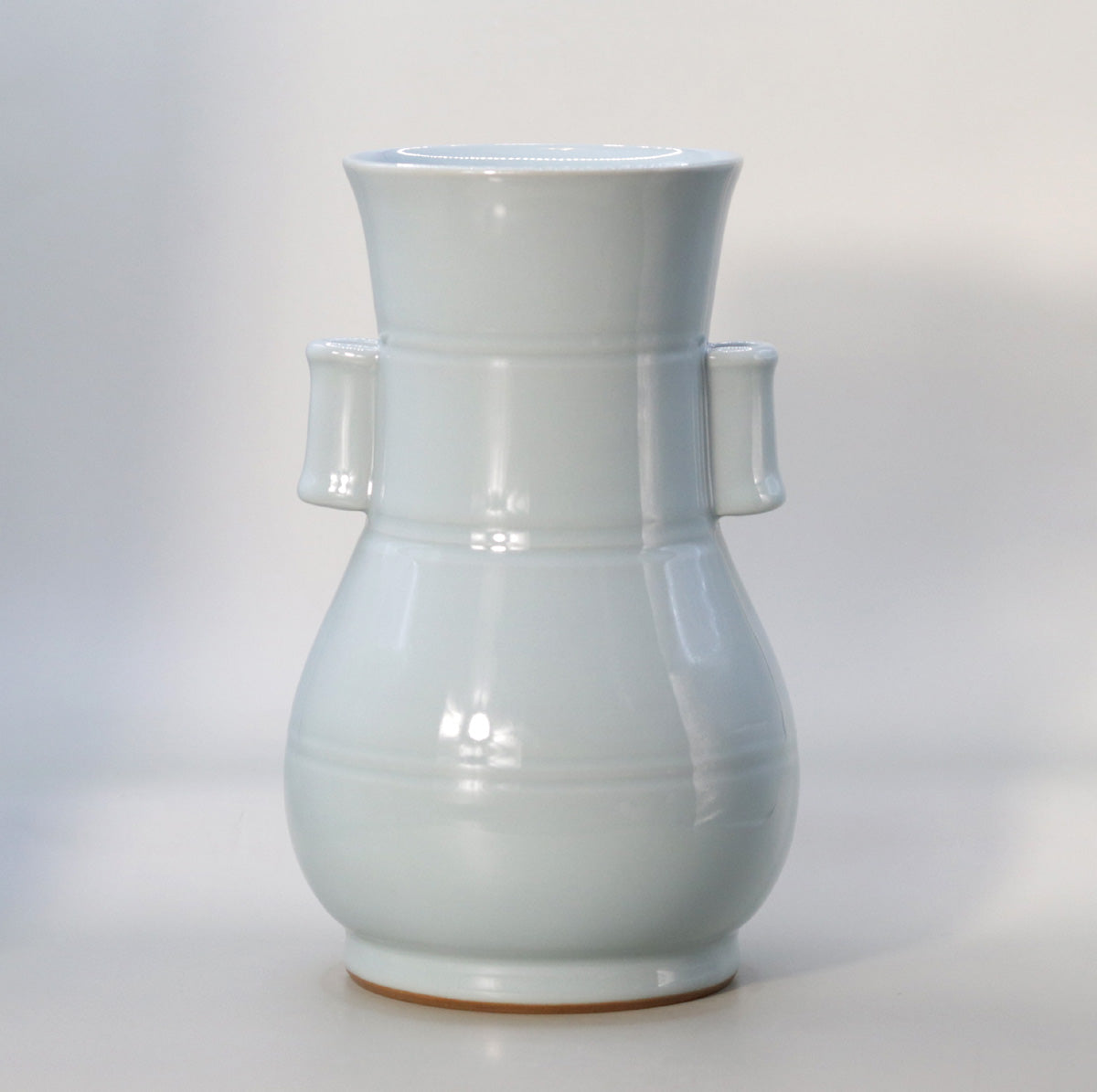
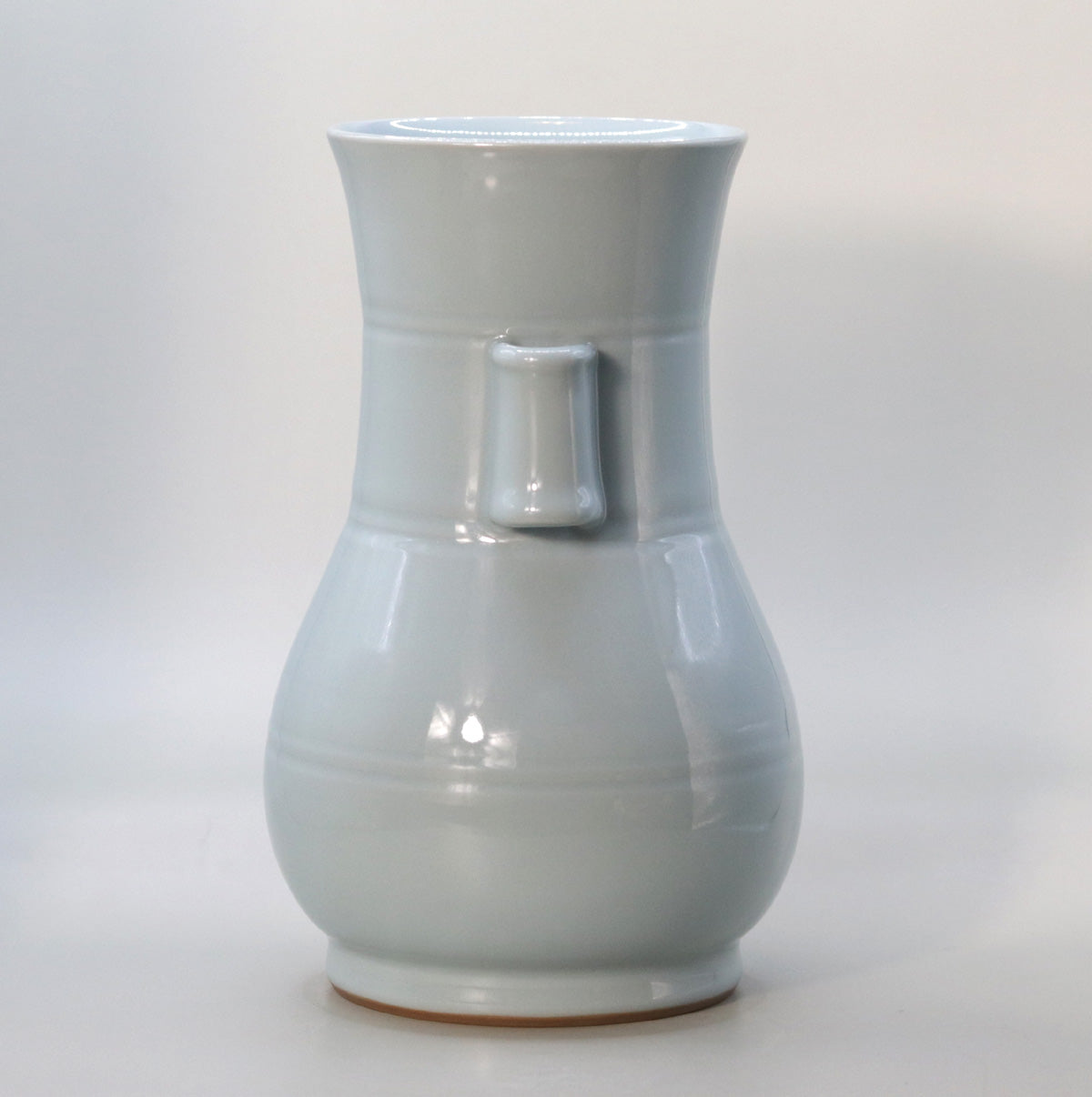
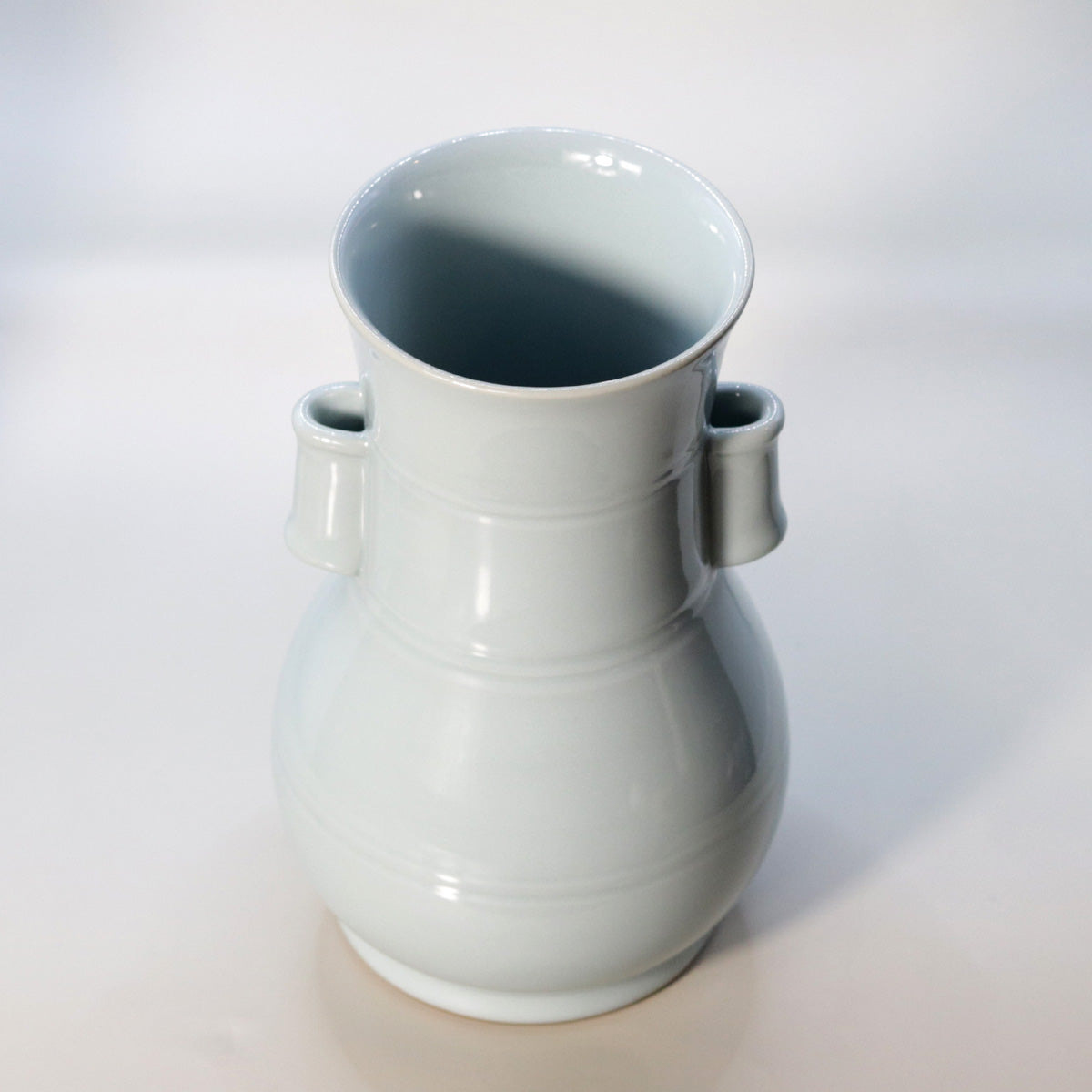
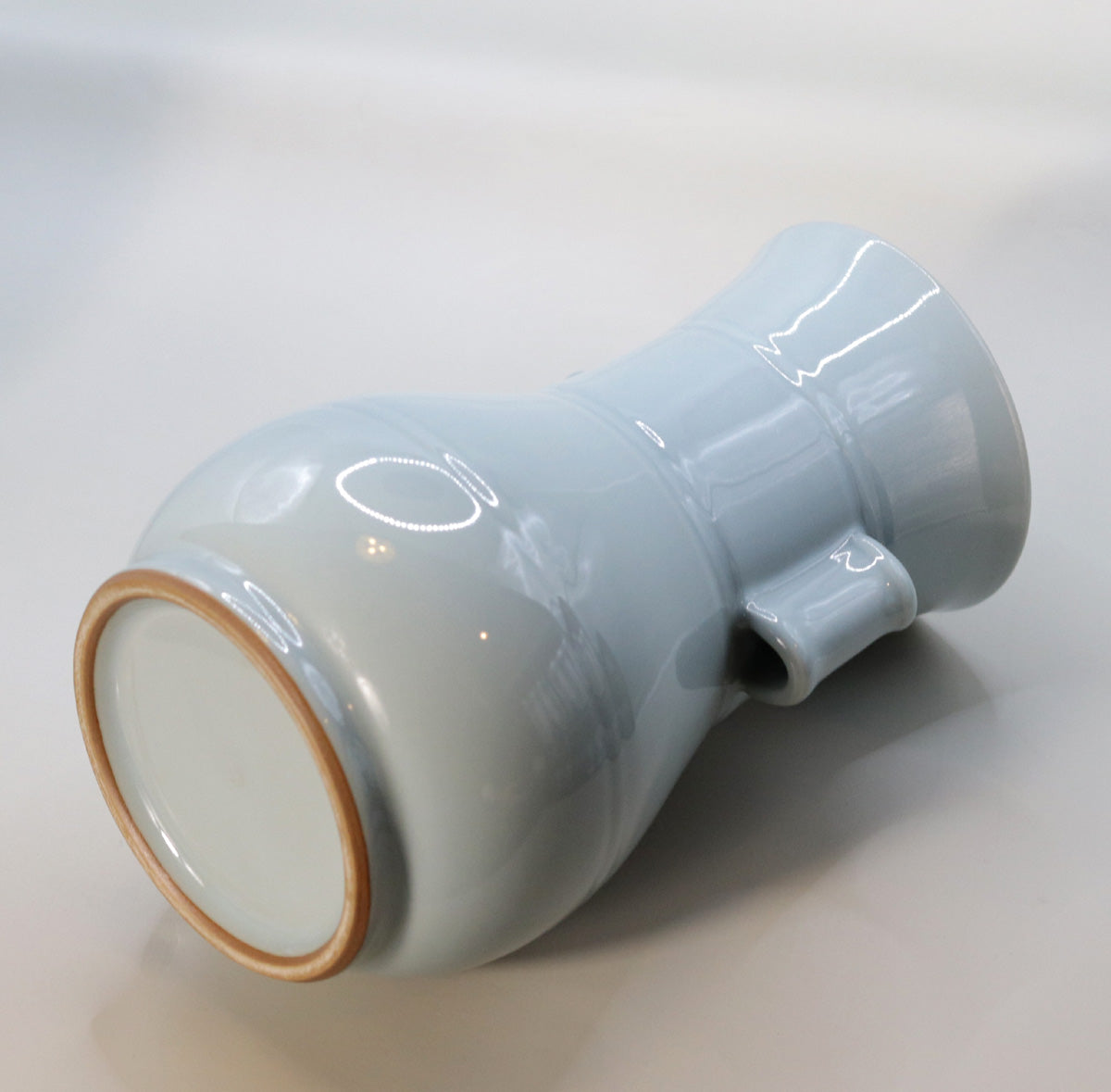

Multi-Column
-
[I will send it to you quickly and carefully]
We carefully package each product in a way that suits it best.
Also, delivery times vary depending on the piece (vessel, etc.).
Items that already come with a box will be shipped within 1-3 days of the order date.
For items that require a box to be made after your order, it will take approximately 30 days for production to be completed and then shipped.
In either case, once we have confirmed your order, we will contact you by email to inform you of the delivery date.
-
[Requests when purchasing pottery]
Even products that look the same may differ slightly in color, shape, size, etc.
The way the glaze is used, the power of the kiln, the firing method, the season, and the humidity also affect the appearance of the pottery.
Please understand the individuality of each piece of pottery and enjoy the unique warmth of handmade.


